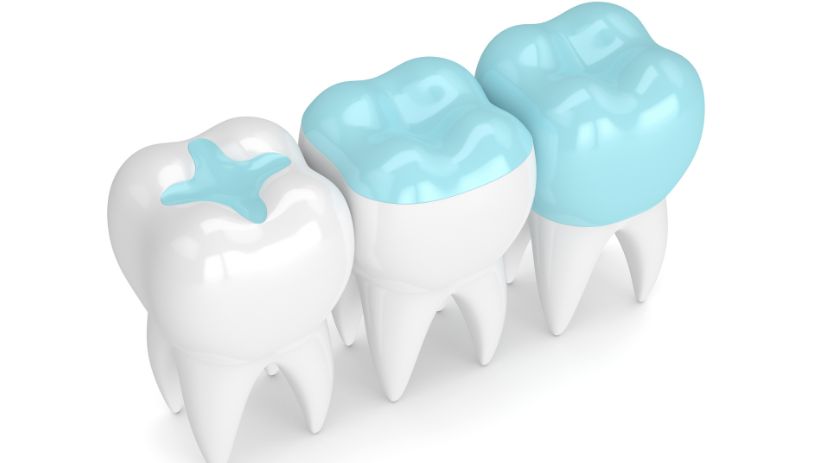
Fillings in Teeth: White Vs. Silver
Pros and Cons of White Fillings
At Woodcroft Dental in Midhurst, West Sussex, we often get questions from our patients about the different fillings available. One of the most common choices is between white (composite) and silver (amalgam) fillings. Let’s break down the pros and cons of each.
White fillings, also known as composite fillings, are made from a tooth-coloured resin material that is bonded to the tooth. The main advantage is their aesthetic appeal – they blend in seamlessly with the natural colour, making them virtually invisible. This makes them a popular choice for the front of the mouth where appearance is a key concern.
However, white fillings do have some drawbacks. They are generally not as durable as silver fillings and may need to be replaced more frequently, especially in areas that experience high chewing forces like the back teeth. The bonding process can also be more technique-sensitive, requiring careful preparation of the tooth by the dentist. Additionally, white fillings tend to be more expensive than the silver.
Pros and Cons of Silver Fillings
Silver fillings have been used in dentistry for over a century. They are made from a mixture of metals including silver, tin, copper and mercury. The main advantage is their strength and durability – they can withstand the heavy chewing forces in the back of the mouth and typically last longer than white fillings before needing replacement.
On the downside, silver fillings have a metallic appearance that some find unattractive, especially in the front of the mouth. There have also been some concerns raised about the safety of the mercury content, although extensive research has shown that the small amounts used are not harmful. Silver fillings can also expand and contract with temperature changes, which can lead to cracks or fractures in the tooth.
The Process of Getting White Fillings at Woodcroft Dental
If you decide that white fillings are the right choice, here’s what to expect from our Midhurst practice:
- Numbing the area: We’ll start by administering a local anaesthetic to numb the tooth and surrounding area so you don’t feel any discomfort during the procedure.
- Removing the decay: Using a small drill, we’ll carefully remove any decayed or damaged tooth material to prepare the tooth.
- Etching and bonding: We’ll then etch the surface of the tooth with a mild acid to create tiny grooves for the filling material to adhere to. A bonding agent is applied to help the filling stick securely.
- Placing the filling: The tooth-coloured resin material is then carefully sculpted and layered into the prepared tooth cavity. We’ll use a curing light to harden each layer as we go.
- Polishing: Once the filling is complete, we’ll polish it to ensure a natural-looking finish that blends seamlessly with your teeth.
The entire process typically takes 30-60 minutes per filling, depending on the size and location of the cavity. We’ll ensure you’re comfortable throughout and answer any questions you may have.
Cost Comparison: White vs. Silver
The higher cost of white fillings is primarily due to the more complex placement process and the specialised materials used. However, many patients feel the aesthetic benefits are worth the additional investment.
It’s important to note that the final cost may vary depending on the size and location of the cavity, as well as any additional procedures that may be required. We’ll provide you with a detailed cost estimate during your consultation so you can make an informed decision.
Maintenance and Care
Like any dental restoration, white fillings require proper care and maintenance to ensure they last as long as possible. Here are some tips:
- Practice good oral hygiene: Brush twice a day, floss daily, and use an antibacterial mouthwash to keep your teeth healthy.
- Avoid hard, crunchy foods: Be mindful of biting down on hard foods like ice, nuts, or hard candy, as this can cause the fillings to chip or crack over time.
- See your dentist regularly: Schedule routine check-ups and cleanings every six months so we can monitor their condition and catch any issues early.
- Report any problems: If you notice any sensitivity, discolouration, or changes to the feel of your fillings, be sure to let us know right away so we can address it promptly.
By following these simple guidelines, you can extend the lifespan of your white fillings and maintain a healthy, beautiful smile.
Book a consultation today to discuss your options for fillings and find the best solution for your needs!
In conclusion, both white and silver fillings have their own unique advantages and disadvantages. At Woodcroft Dental in Midhurst, West Sussex, we’re committed to providing our patients with the highest quality of care and helping them make informed decisions about their oral health. Whether you opt for the aesthetic appeal of white fillings or the durability of silver, we’ll work closely with you to ensure you achieve the best possible outcome.

